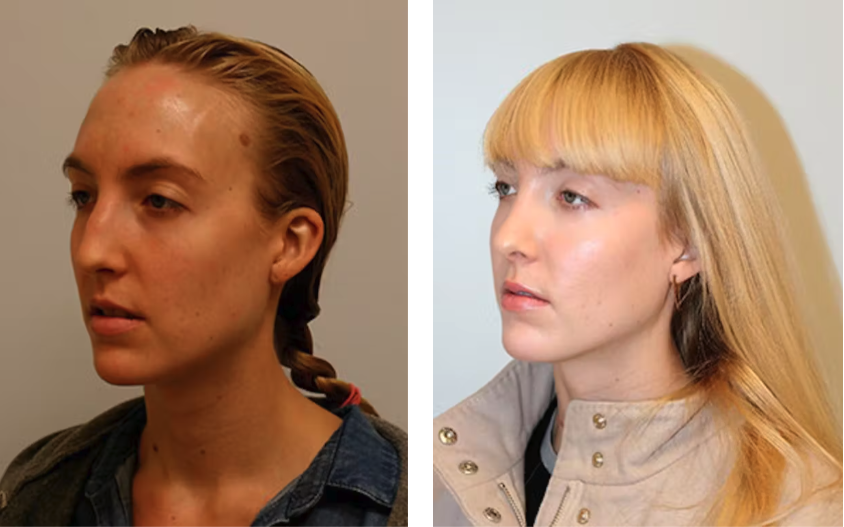
Rhinoplasty is one of the most refined and detail-oriented procedures in facial plastic surgery, and at Hessler Plastic Surgery, Dr. Jill Hessler brings world-class precision to every case. As a double-board-certified facial plastic surgeon recognized nationally for her surgical skill and natural-looking outcomes, Dr. Hessler is committed to creating beautiful, harmonious results while minimizing scarring as discreetly as possible. Patients often ask how visible rhinoplasty scars will be, and understanding the answer can ease anxiety and help guide expectations. In this blog, we’ll look at what truly influences scar visibility.
Rhinoplasty Techniques and Where Scars Form
Rhinoplasty may be performed using an open or closed approach, and understanding the distinction helps clarify both scar placement and why Dr. Hessler selects one technique over the other. An open rhinoplasty uses a small, strategically placed incision along the columella to provide full visibility of the nasal structures. This approach is ideal for refining the tip, correcting asymmetry, or addressing complex or revision cases where precision access is essential.
A closed rhinoplasty keeps all incisions inside the nostrils, leaving no external scar. This technique works well for patients who need internal adjustments without extensive structural exposure. By tailoring the approach to your anatomy and aesthetic goals, Dr. Hessler ensures that incisions are placed discreetly and healing is supported from the start.
What Determines How Well Scars Heal
Scar visibility varies from patient to patient, and several clinical factors shape how a scar matures over time. Technique plays a central role, but individual healing tendencies and consistent aftercare influence the long-term appearance.
- Tension on the incision: Low-tension areas typically heal with finer, more refined lines.
- Skin characteristics: Thicker or oilier skin may take longer to settle but can naturally conceal scars well.
- Genetic tendencies: Some patients are predisposed to forming more prominent scars.
- Sun exposure: UV rays can darken healing scars, making diligent protection essential.
How Surgical Expertise Minimizes Scarring
Consistent, natural-looking scar outcomes rely on precision, planning, and surgical finesse. Dr. Hessler’s extensive experience in both primary and revision rhinoplasty allows her to tailor incisions carefully, minimize tissue trauma, and use advanced closure techniques that support smooth, subtle healing.

How to Support Low-Visibility Healing
Thoughtful aftercare plays a meaningful role in how your scars mature. Consistent, careful attention helps ensure that incision lines fade cleanly and stay discreet over time.
- Keep incisions clean: Proper cleansing reduces irritation and supports healthy healing.
- Protect your skin from the sun: Sunscreen and shade help prevent discoloration.
- Avoid picking or rubbing: Disturbing a healing incision can widen or darken the scar.
- Attend follow-up appointments: Dr. Hessler monitors your progress and may recommend treatments to optimize healing.
What Results Look Like Over Time
Rhinoplasty scars improve steadily as the nose heals. Within a few months, most patients see meaningful softening, and by one year, a well-placed columellar incision from an open rhinoplasty often blends into the natural shadow under the nose. Closed rhinoplasty leaves no external scar at all.
Begin Your Rhinoplasty Journey With Confidence
Understanding how rhinoplasty scars mature over time can help you feel informed and comfortable as you explore your options. With Dr. Hessler’s advanced training, aesthetic expertise, and commitment to safety, you can expect thoughtful planning and results that respect your facial balance. To learn more about your rhinoplasty options and what recovery may look like for you, contact Hessler Plastic Surgery in Palo Alto to schedule a personalized consultation.

